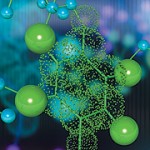It’s a busy time for potential regulators of nanomaterials. This post will point to some of the recent activities, in the United States and abroad.
The Organization for Economic Cooperation and Development’s (OECD) Cooperative Chemical Assessment Program (CoCAP) has long been working to assess the hazards of chemicals across international lines. OECD has now decided that CoCAP has served its purpose and must be replaced by a different organization at the end of 2014. One reason for the change is that the activities of the EU’s REACH program and research in the United States have become the primary assessment mechanisms, rendering CoCAP’s current activities unnecessary. The new program is still in the planning stages, but will involve the development and implementation of new methodologies.
This sounds like progress. As this blog often has noted, nanotechnology assessment has received more attention in the international arena than in the United States, and this is another example of an international organization moving forward.
A summary of CoCAP may be accessed at:
http://www.oecd.org/env/ehs/risk-assessment/oecdcooperativechemicalsassessmentprogramme.htm
A report of the announcement to replace CoCAP appeared in
Rick Mitchell, Multi-Nation Group to Replace Program That Weighs High-Volume Chemical Hazards, 28 Toxics L. Rep. (BNA) 707 (June 27, 2013) (by subscription)
Speaking of the EU, the European Commission is seeking suggestions on better applying the REACH assessment to nanomaterials. The official document seeking comments states:
“Specifically, the policy initiative shall provide clearer REACH requirements for nanomaterials to ensure that industry demonstrates safe use in the registration dossiers in accordance with the aims of REACH Article 1(1) ‘to ensure a high level of protection of human health and the environment, including the promotion of alternative methods for assessment of hazards of substance, as well as the free circulation of substances on theinternal market while enhancing competitiveness and innovation’.”
The Commission is reaching out to all interested stakeholders to provide “the best possible evidence base for its work.”
The official announcement, with information on submitting comments, is available at:
http://ec.europa.eu/environment/consultations/nanomaterials_2013_en.htm
In another demonstration of international cooperation, the United States and Canada have developed a uniform classification system for industrial nanomaterials. The U.S.-Canada Regulatory Cooperation Council’s (RCC) working group has been involved in this process since 2011 as part of a broader initiative to bring about uniformity in addressing nanotechnology. This latest step is part of a continuing process. This blog has previously discussed the work of the RCC here.
Here in the United States, EPA has issued its final significant new use rules (SNURs) for 17 substances, mostly constituting substances at the nanoscale, which will go into effect on August 26, 2013. Fifteen of the seventeen SNURs are based upon TSCA section 5(e) consent orders issued by EPA and reflect the substance of the orders. With regard to the other two SNURs, “EPA determined that one or more of the criteria of concern . . . were met.” (Final Rule, p. 6) In the Final Rule, EPA responded to various comments, including those directed at workplace safety. This blog will address those comments at a later date.
The Final Rule is available at:

 The National Academies have promised a report by the end of January 2012 on priorities (both short- and long-term) for studying the health, safety, and environmental effects of nanotechnology. According to the National Academies, this report will address the following matters: the properties of engineered nanomaterials; methods and technologies for “detecting, measuring, analyzing, and monitoring” engineered nanomaterials; what studies are needed; what testing methods need to be developed; the models for predicting impacts that should be developed; research priorities; and the criteria for evaluating research progress. In its “Statement of Task,” the National Research Council has explained:
The National Academies have promised a report by the end of January 2012 on priorities (both short- and long-term) for studying the health, safety, and environmental effects of nanotechnology. According to the National Academies, this report will address the following matters: the properties of engineered nanomaterials; methods and technologies for “detecting, measuring, analyzing, and monitoring” engineered nanomaterials; what studies are needed; what testing methods need to be developed; the models for predicting impacts that should be developed; research priorities; and the criteria for evaluating research progress. In its “Statement of Task,” the National Research Council has explained: For those of you who are following this blog, I’ll apologize for letting nearly two months slip away since the previous post. The reason has to do with my co-blogger, Eric Laury. After passing both the Pennsylvania and New Jersey bar exams, Eric took a job in a law firm in Denver, which means he is now studying for the Colorado bar exam. I have every reason to believe that Eric will resume writing for this blog after things settled down for him, but likely as an occasional blogger. I congratulate him on his success and look forward to our continued collaboration.
For those of you who are following this blog, I’ll apologize for letting nearly two months slip away since the previous post. The reason has to do with my co-blogger, Eric Laury. After passing both the Pennsylvania and New Jersey bar exams, Eric took a job in a law firm in Denver, which means he is now studying for the Colorado bar exam. I have every reason to believe that Eric will resume writing for this blog after things settled down for him, but likely as an occasional blogger. I congratulate him on his success and look forward to our continued collaboration. It’s been a long time coming, but the European Commission published its definition of nanomaterials on October 18, 2011. Though not binding on EU member countries, this is a major step toward the use of a uniform definition throughout the EU and – who knows? – elsewhere in the world. The Commission adopted the following previously recommended definition of “nanomaterial”:
It’s been a long time coming, but the European Commission published its definition of nanomaterials on October 18, 2011. Though not binding on EU member countries, this is a major step toward the use of a uniform definition throughout the EU and – who knows? – elsewhere in the world. The Commission adopted the following previously recommended definition of “nanomaterial”: Listening to the speakers at the American Bar Association section webinar on the subject of “Nano Governance: The Current State of Federal, State, and International Regulation,” discussed in
Listening to the speakers at the American Bar Association section webinar on the subject of “Nano Governance: The Current State of Federal, State, and International Regulation,” discussed in 
 In my previous post, I indicated that I would be moving on to discuss the relevancy arm of the Daubert admissibility test. It turns out I have a few more thoughts about the reliability arm.
In my previous post, I indicated that I would be moving on to discuss the relevancy arm of the Daubert admissibility test. It turns out I have a few more thoughts about the reliability arm. This post continues the discussions in earlier posts about evidentiary
This post continues the discussions in earlier posts about evidentiary  A couple of weeks ago, the International Organization for Standardization (ISO) announced the adoption of standards for some testing of nanoparticles. Specifically the organization, based in Geneva, set standards for studying the inhalation toxicity of these substances. The United States is a member of the ISO, through the American National Standards Institute (ANSI). Of course, the new standard has no binding effect on governments and their regulatory agencies, unless it is adopted.
A couple of weeks ago, the International Organization for Standardization (ISO) announced the adoption of standards for some testing of nanoparticles. Specifically the organization, based in Geneva, set standards for studying the inhalation toxicity of these substances. The United States is a member of the ISO, through the American National Standards Institute (ANSI). Of course, the new standard has no binding effect on governments and their regulatory agencies, unless it is adopted.